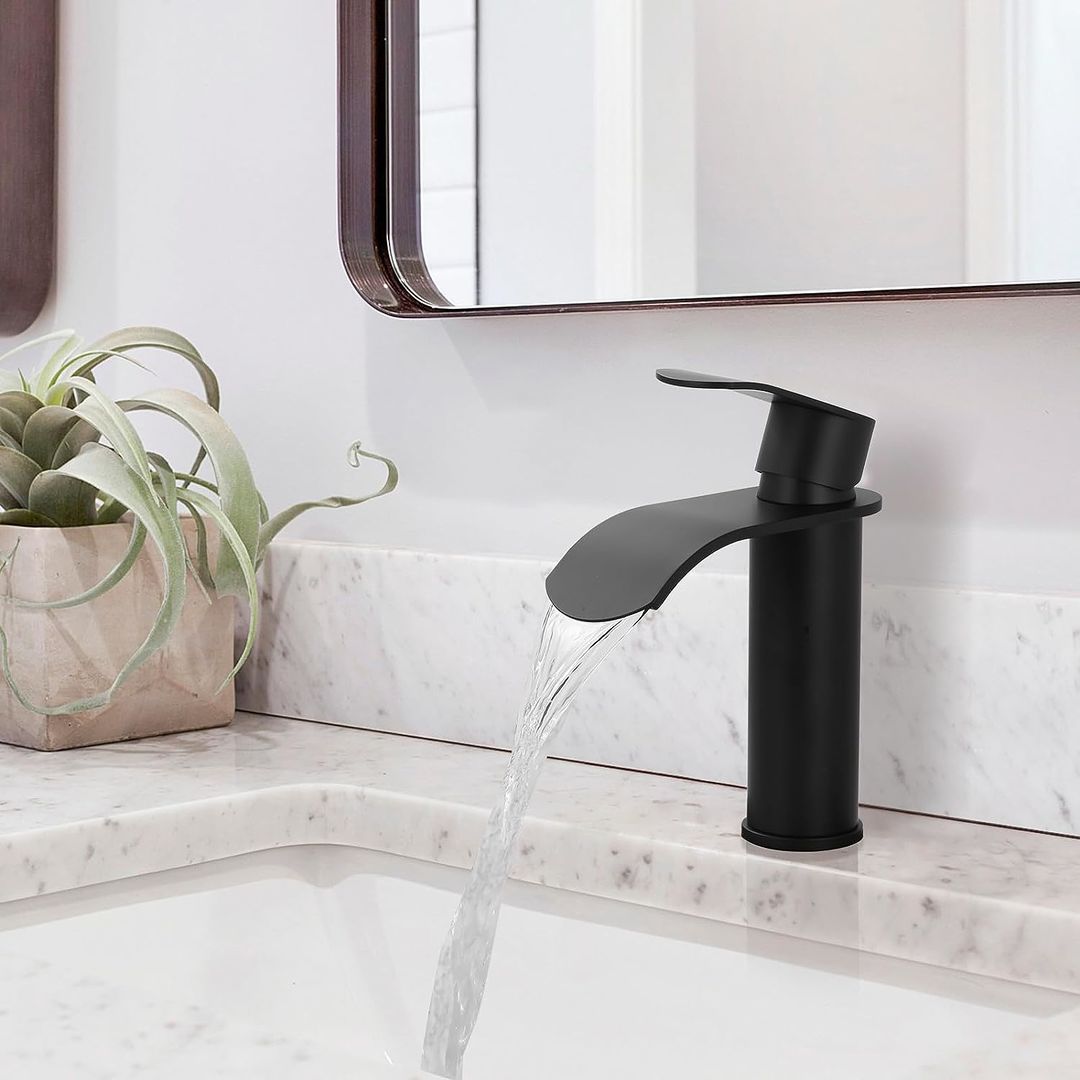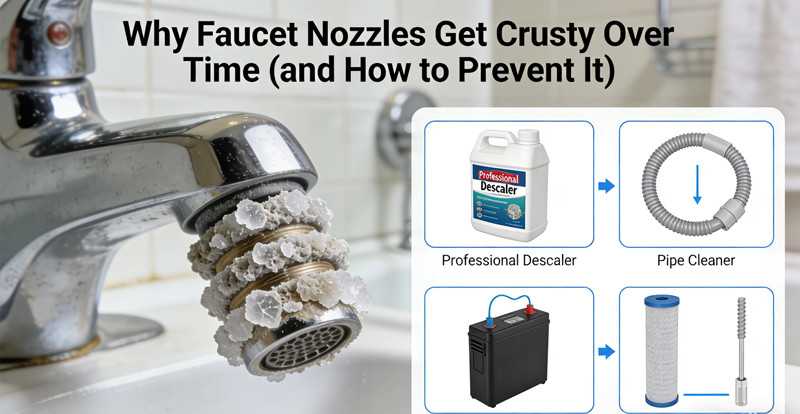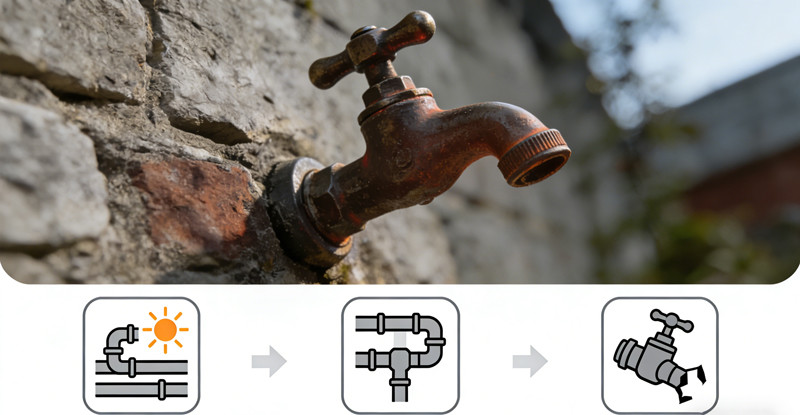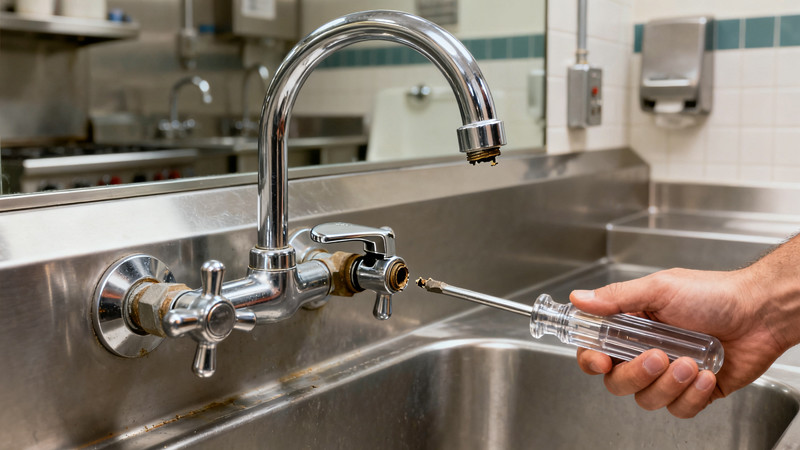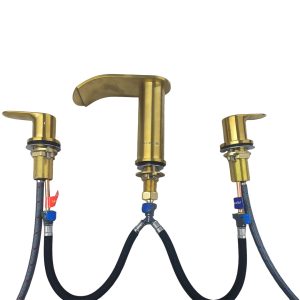![]()
Installing or replacing a faucet might seem straightforward, but getting a watertight seal is critical — and that’s where sealants come in. Two of the most common sealants used during faucet installation are plumber’s putty and silicone caulk. Both have their place in plumbing, but knowing when to use each can make the difference between a long-lasting installation and a leaky headache.
So, when should you use plumber’s putty, and when is silicone the better choice? Let’s break it down.
What Is Plumber’s Putty?
Plumber’s putty is a soft, pliable sealing compound that doesn’t harden like glue or caulk. It remains somewhat flexible, which makes it ideal for forming watertight seals in areas that might need to be adjusted or taken apart later.
It’s most commonly used under faucet bases, sink strainers, and other fixtures that sit on top of a flat surface. It’s easy to work with, can be molded by hand, and doesn’t require curing time.
Pros of Plumber’s Putty:
- Easy to apply and reposition
- Doesn’t dry out or harden
- Easy to clean up
- Ideal for non-pressurized areas
Cons of Plumber’s Putty:
- Not adhesive — won’t hold items in place
- Not recommended for plastic or porous surfaces
- Not ideal for vertical applications
What Is Silicone Caulk?
Silicone caulk is a sticky, rubber-like sealant that cures and hardens over time. It adheres strongly to most surfaces, including porcelain, ceramic, glass, and metal, creating a long-lasting waterproof barrier. Silicone is more permanent than plumber’s putty and is commonly used around sinks, tubs, and faucets where water exposure is constant.
It comes in different formulas, including kitchen and bath-grade silicone, which includes mold- and mildew-resistant additives.
Pros of Silicone:
- Waterproof and mold-resistant
- Strong adhesion to many materials
- Works well for vertical applications
- Creates a long-term seal
Cons of Silicone:
- Difficult to remove once cured
- Requires drying/curing time (usually 24 hours)
- Can be messy if not applied carefully
- Not ideal for parts that may need future disassembly
Key Differences Between Plumber’s Putty and Silicone
| Feature | Plumber’s Putty | Silicone Caulk |
|---|---|---|
| Drying Time | Doesn’t dry/harden | Requires curing (up to 24 hrs) |
| Waterproof | Yes, but less than silicone | Fully waterproof |
| Adhesion | Low | High |
| Best Use | Removable seals | Permanent seals |
| Ease of Removal | Easy | Difficult |
| Suitable for Plastic | Often no | Yes (check compatibility) |
| Use on Vertical Surfaces | No | Yes |
When to Use Plumber’s Putty for Faucets
Plumber’s putty is ideal under the faucet base where it meets the countertop or sink. Here’s when it’s the right choice:
✅ Use Plumber’s Putty:
- Under faucet escutcheons (base plates) on stainless steel or metal sinks
- On flat, horizontal surfaces where you want a watertight seal
- For applications where the faucet or component might need to be removed or adjusted later
- When you need quick, no-cure-time sealing
🚫 Don’t Use Plumber’s Putty:
- On plastic, granite, or stone countertops — oils in the putty can cause staining
- In places that require adhesive strength
- On vertical surfaces, as it may sag or shift
When to Use Silicone for Faucets
Silicone should be your go-to when adhesion and waterproofing are critical, especially in areas that are constantly exposed to moisture.
✅ Use Silicone:
- When sealing around the faucet base on stone or granite countertops (non-staining formula recommended)
- To seal the edges of the sink or faucet holes where water might seep underneath
- When working with plastic fixtures or components
- In bathrooms or high-moisture environments where mold resistance is important
- For vertical applications (like wall-mounted faucets or shower fixtures)
🚫 Don’t Use Silicone:
- On components that may need to be removed later (e.g., temporary installs)
- If you’re uncomfortable with mess or lack experience applying it cleanly
- If you need a seal right away (it needs curing time)
Can You Use Both?
In some situations, yes — but be cautious. You might use plumber’s putty under the faucet base for easy repositioning, then apply a thin bead of silicone around the edges once everything is in place for added water protection. However, using both together can be redundant or even counterproductive if done incorrectly.
If you must choose one, think about:
- Will this ever need to be removed? Use plumber’s putty.
- Does this need to stay sealed forever? Use silicone.
Best Practices
- Read manufacturer instructions: Some faucet and sink manufacturers specify what sealant to use.
- Avoid staining materials: If working on granite or stone, opt for non-staining plumber’s putty or a color-matched silicone.
- Test fit before sealing: Dry-fit your faucet and check the position before applying sealant.
- Apply silicone neatly: Use painter’s tape for clean lines and smooth the bead with a damp finger or tool.
- Let silicone cure fully: Don’t run water over the seal until the recommended drying time is complete.
Final Verdict
- Use plumber’s putty for flexible, easy-to-remove seals under metal faucet bases, especially on stainless steel sinks.
- Use silicone caulk for permanent, waterproof seals, especially around granite, plastic, and in high-moisture zones.
Each has its role. The key is knowing the surface, environment, and long-term needs of your faucet installation.
 WOWOW Faucets
WOWOW Faucets